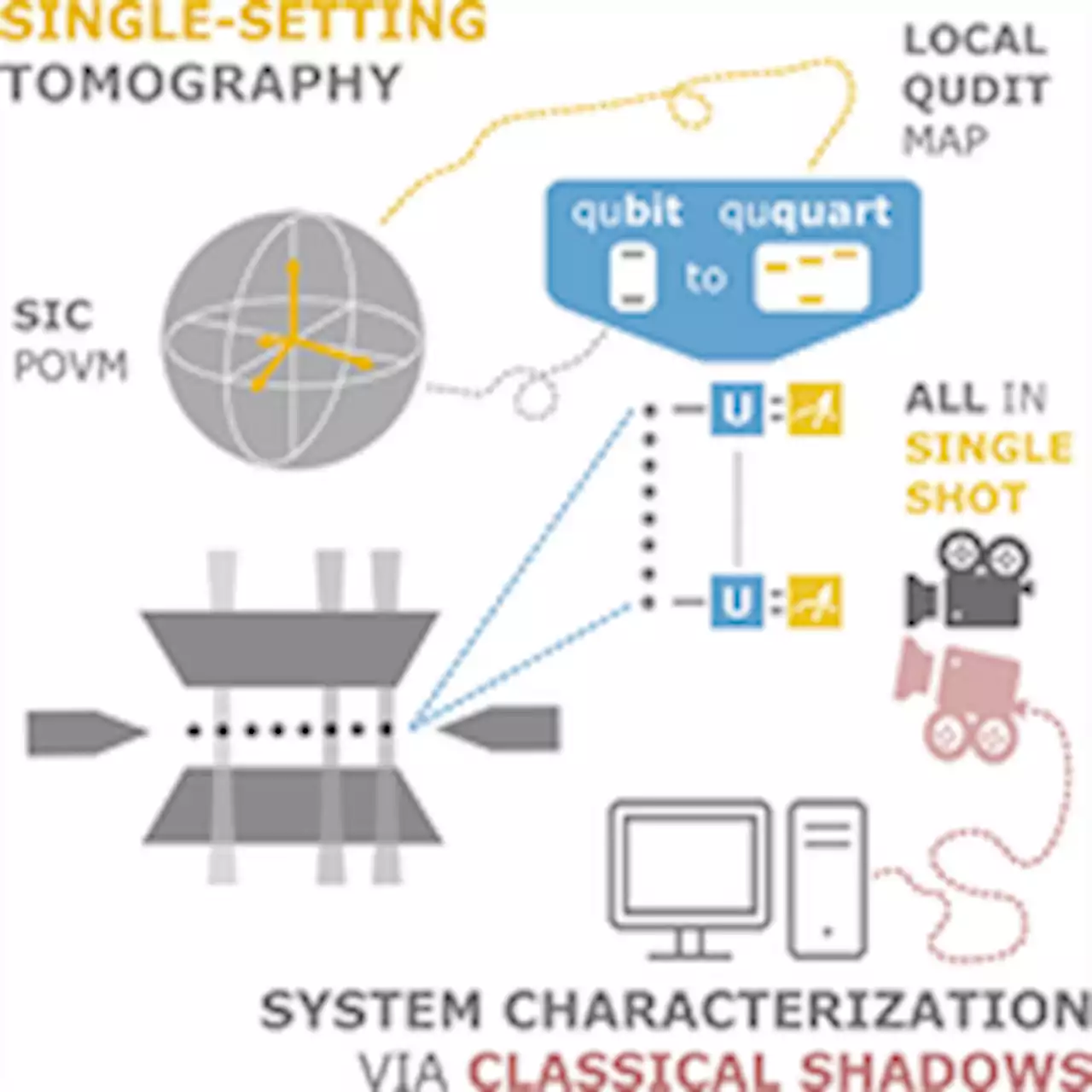A method to characterize large quantum computers using only a single measurement setting PRX_Quantum
state orthogonal to the first SIC vector, whose component completely vanishes. Convergence in is significantly faster than in as only three of the nonorthogonal SIC vectors take part. Boosted convergence is related to unambiguous state discrimination [], limiting nonorthogonal measurements. Superposition state with maximized overlap with one of the SIC vectors. Superposition state with minimum overlap with the SIC vectors.
Complementary, insets represent numerical results on projection noise only to more distinctively illustrate convergence behavior. – Local states that align with a SIC vector , show slower convergence for SIC tomography than those orthogonal to a SIC vector ,, confirming the experimental observations of Fig.. Pauli tomography, on the other hand, generally performs best for states aligned with the basis ,.
United States Latest News, United States Headlines
Similar News:You can also read news stories similar to this one that we have collected from other news sources.
 Ultra-Cold Mini Twisters: Quantum Vortices Are a Strong Indication of SuperfluidityIn nature, vortices can be found everywhere: Whirling up water can produce swirls. When the atmosphere is stirred up, huge tornadoes can form. This is also the case in the quantum world, except that many identical vortices are being formed simultaneously — the vortex is quantized. In many quantum ga
Ultra-Cold Mini Twisters: Quantum Vortices Are a Strong Indication of SuperfluidityIn nature, vortices can be found everywhere: Whirling up water can produce swirls. When the atmosphere is stirred up, huge tornadoes can form. This is also the case in the quantum world, except that many identical vortices are being formed simultaneously — the vortex is quantized. In many quantum ga
Read more »
 Black Holes in Quantum States Have Surprisingly Weird MassesFor the better part of a century, quantum physics and the general theory of relativity have been a marriage on the rocks.
Black Holes in Quantum States Have Surprisingly Weird MassesFor the better part of a century, quantum physics and the general theory of relativity have been a marriage on the rocks.
Read more »
 Schrödinger’s cat: Simulations show black holes exhibit baffling quantum behaviorScientists confirm that black holes can be massive and small, dead and alive all at the same time, just like Schrödinger’s cat.
Schrödinger’s cat: Simulations show black holes exhibit baffling quantum behaviorScientists confirm that black holes can be massive and small, dead and alive all at the same time, just like Schrödinger’s cat.
Read more »
 ASU launches quantum technology research collaborativeThe collaborative is made up of companies, academic institutions, startups and other organizations. phoenix
ASU launches quantum technology research collaborativeThe collaborative is made up of companies, academic institutions, startups and other organizations. phoenix
Read more »
 Human-AI Collaboration Discovers Quantum Phenomenon Beyond Human IntuitionUsing artificial intelligence to find possibilities while humans gauge their significance is proving to be a powerful new form of scientific discovery.
Human-AI Collaboration Discovers Quantum Phenomenon Beyond Human IntuitionUsing artificial intelligence to find possibilities while humans gauge their significance is proving to be a powerful new form of scientific discovery.
Read more »
